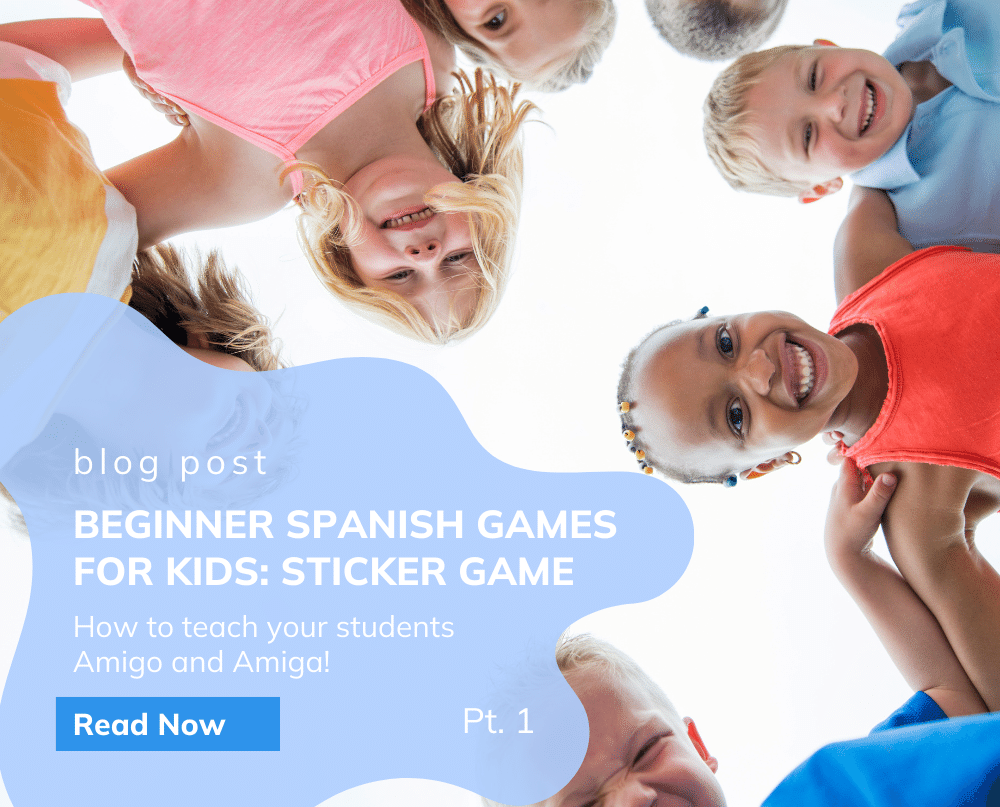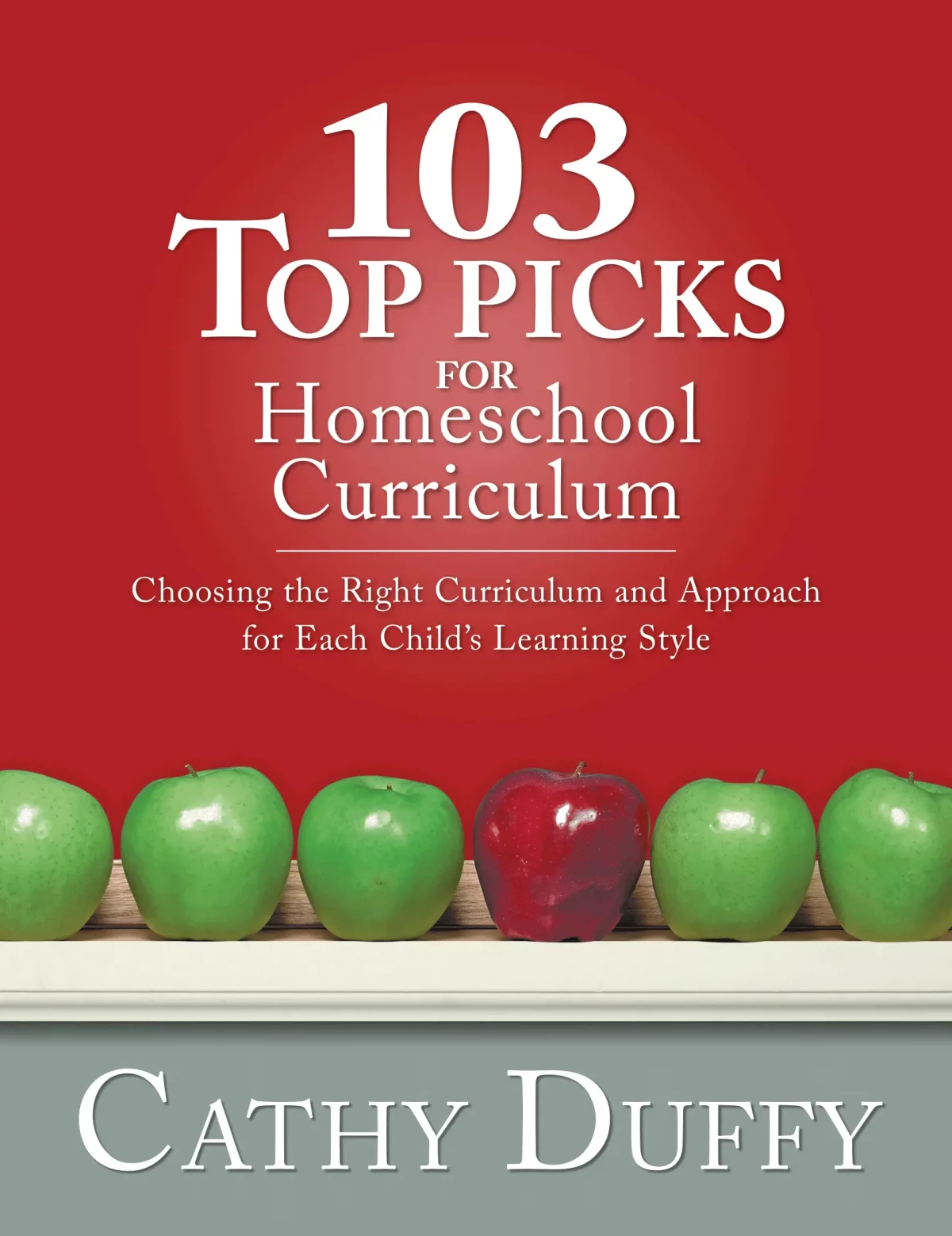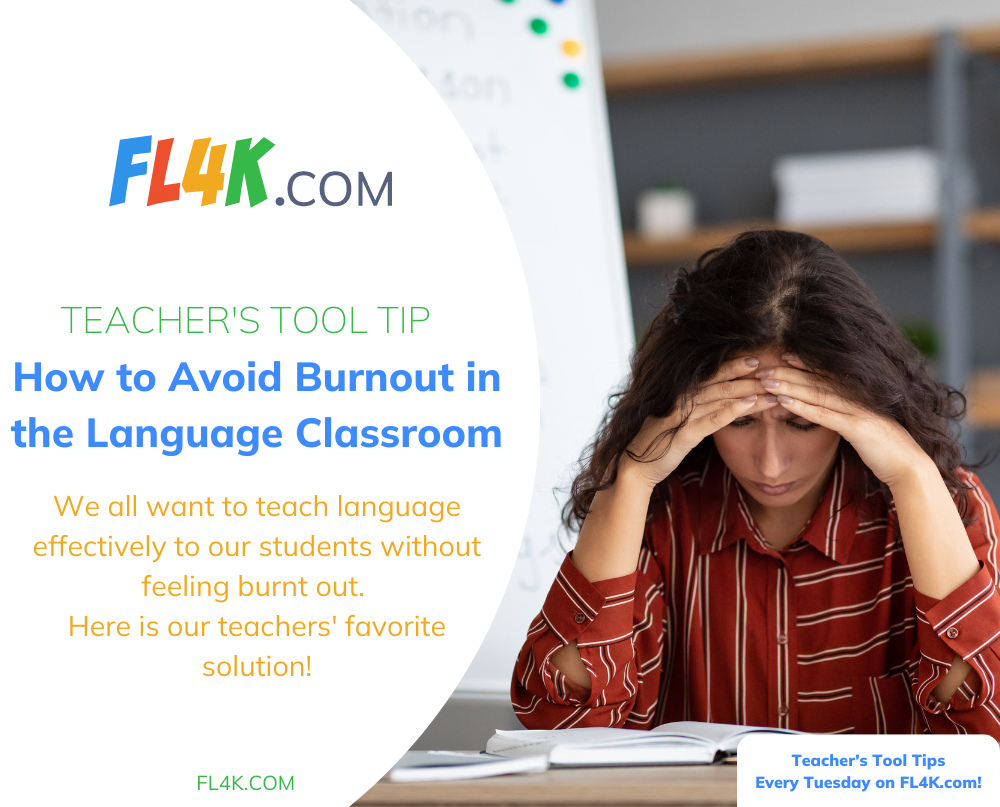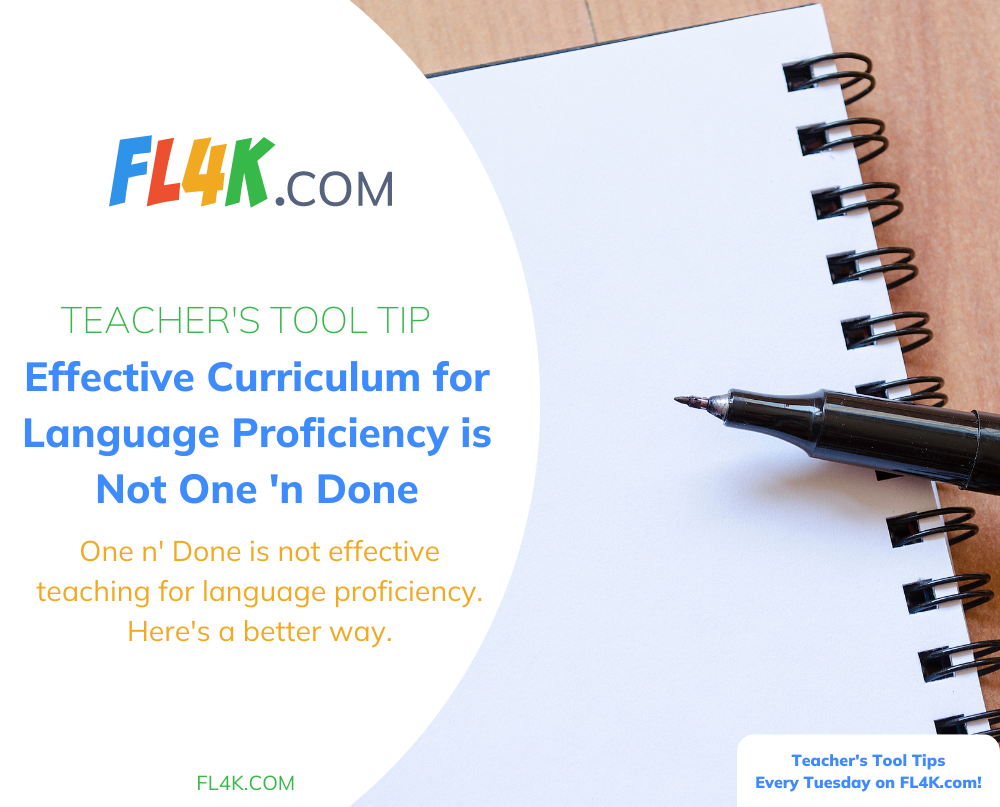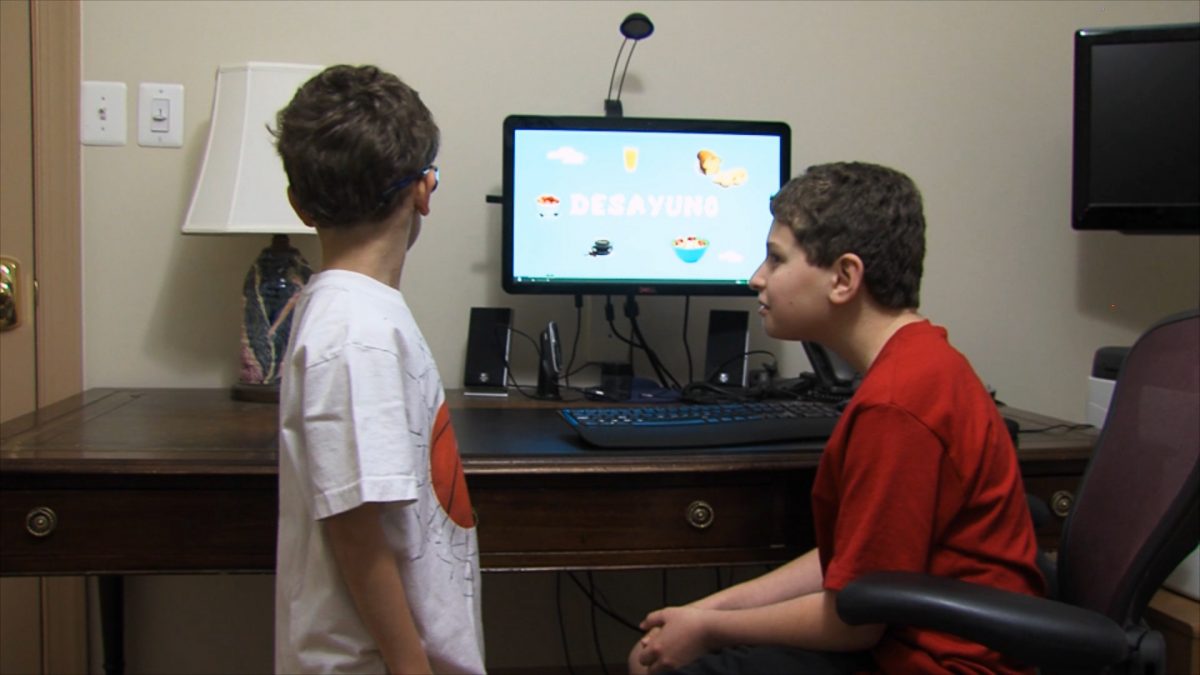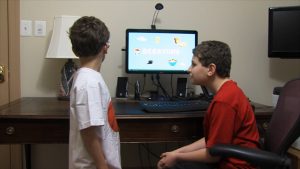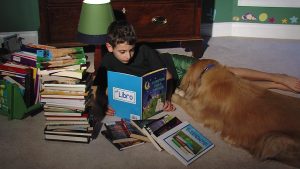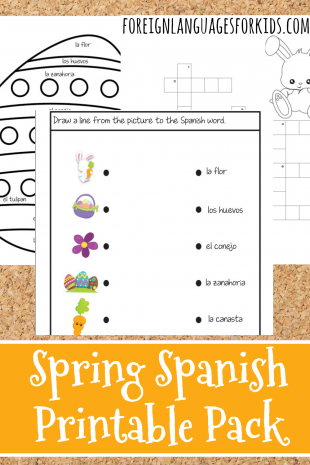Reading Time: 7 minutes
It’s SPRING! This is a great time of year to put the windows up in your home and get the fresh air flowing. It’s also the time of year when many of us begin to think about cleaning out the dust and grime that has built up over the winter, and purging the clutter that has piled up inside our homes.
However, those of us with young kids at home all day may have a hard time with this. When mine were little, every time I’d get a bucket out to start cleaning someone would come alongside me and either dump or track dirt in on top of it making a nice muddy mess.
Oh, the joys of children!
Through the years I have found a few things that have made spring cleaning with kids a lot easier. This can also be a great time to learn about the world around us and get some major items marked off of moms to do list.
Get the Kids Involved
Many hands make light work … so how do you get the kids to pitch in when it’s time to spring-clean the house? Start with assigning age appropriate tasks. Young children can organize toys, dust items, pick up laundry, etc. With younger kids be sure to assign tasks that can be done in a short time period. Think 10-15 minutes. Working as a team involves kids in the cleaning process, helps them learn cleaning skills, and most important, models both the attitude and the job standard you’re trying to teach.
Older children should be able to do larger tasks. Like scrubbing the bathroom, wiping down walls, mopping, and even some light yard work. Ecnourage each family member to work as a team. Divy up chores by room, let them take turns picking which tasks they want to do. Give them a choice, but let them know that EVERYONE is working together.By having yoru kids working with you, ou won’t have to woryy about what they are getting into while you are spring cleaning.
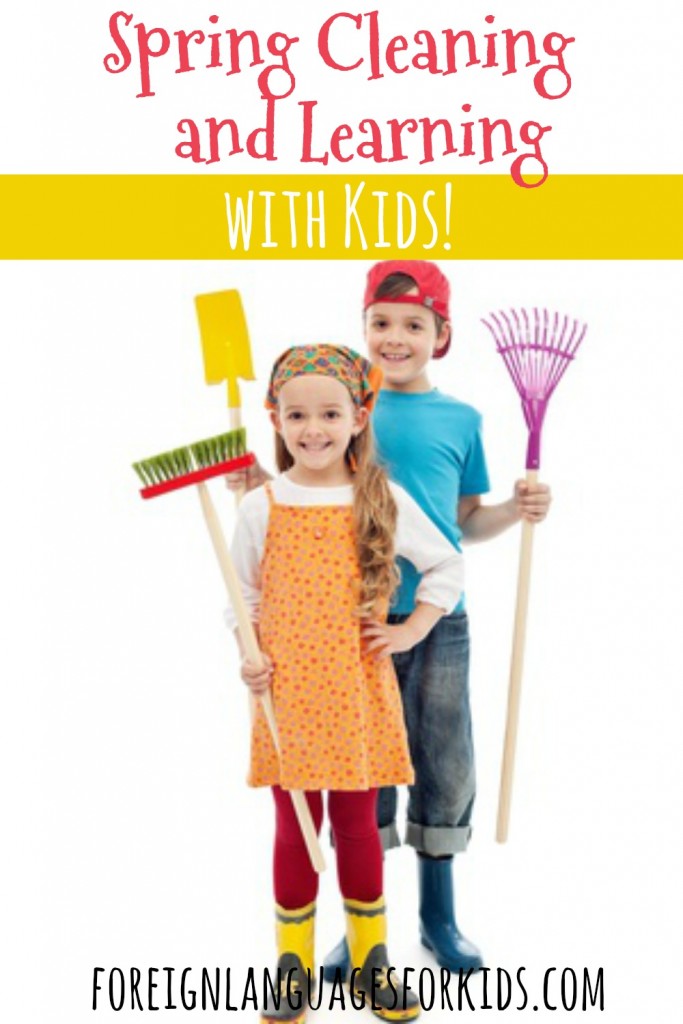
Label Items Around the House
For the younger kids, having visual aids is a HUGE way to ensure success. For example, if you have bins where toys like blocks, balls, and dolls go, add a picture for each item to the bin. This helps your child know where the item goes, and lets you know the task will be completed correctly.
For older kids, include words around the house in another language. If you are learning Spanish, add stickers or labels to these household items. You can also use pictures and labels like those in this post to label a chore chart of what all you want your children to do.
Another option for older children is to allow them to choose which rooms they want to clean by offering them in Spanish. This is a great way to teach older kids vocabulary words in another language! It’s also a great way to eliminate fighting over which room they are going to clean 😉
| el salón |
– |
the living room |
| el (cuarto de) baño |
– |
the bathroom |
| la cocina |
– |
the kitchen |
| el comedor |
– |
the dining room |
| el garaje, la cochera |
– |
the garage |
Make it Fun
Regardless of your age, no one really LIKES to clean, but adding some fun to the day makes it a lot more enjoyable. Here are som eideas for making spring cleaning with kids fun for the whole family!
Play Music!
Playing upbeat music or an exciting audiobook keeps the body moving, and spirits high. Let each child pick a tune they want to listen to, and for the older children let them play their own music or audio book in the room they are working on.
Young children love to dance, and one fun activity to do while cleaning with your kids is playing “wax museum”. Keep the music going, but occasionally sneak and turn it off. At this time everyone has to FREEZE where they are like a wax statue. This is sure to be a giggle fest as the kids test their balance, coordination and reflexes.
Find a “Busy” Chore for Each Child
Look around the house, and find a chore that takes itme, but that even a child can do. I call these busy chores. Here are a few examples.
- Shaking theToaster- Kids will LOVE doing this, and most of the time it doesn’t get done because we just don’t like the mess. Unplug the toaster and lay paper grocery bags or an old cloth over the kitchen counter. Then let your child turn that toaster upside down and do a shake and shimmy dance to get all the crumbs out. Offer your child a wood spoon or chopstick to remove stuck pieces. This is a great time to teach them to NEVER stick metal utensils inside the toaster.
- Alphabetize the Spices- If you have a young child who knows their ABC’s have them sort through your spices.Tell them they can “read” the labels, smell the spices, and even taste them if they choose. Show them which ones you use regularly for baking. In th ened your spices will be more organized, and yoru child will have had some great reading and sorting pracitice.
- Go “skating” for dust bunnies- Have hardwood floors? Have your children wear old pairs of socks and “skate” around the house collecting dust bunnies with their feet. See who can accumulate the largest dust bunny, then hae them collect the dust bunnies in a trash bag along the way.

Discuss Spring Cleaning in Other Countries
Everything we do can be a learning experience. As you are spring cleaning with your kids you are teaching them homemaking skills, life skills, home economics, it is LEARNING. We can also deepen the learning experience by discussing the history of spring cleaning and what that may look like in other countries.
In most countries, spring cleaning has come to mean the process of deep cleaning a house or room. But where did the idea of Spring cleaning come from? No one really knows. However, most countries participate in it in some shape or form.
Shaking the House in Iran
Irans spring cleaning coincides with their New Year which is March 21 (the vernal equinox and first day of the solar cycle). This is a time of refreshing, and rejuvenating. Which is why many Iranians also participate in the tradition of khooneh takouni – ‘shaking the house’ – a custom that lives up to its name.Khooneh takouni is a vigorous spring cleaning ritual. During this time, Iranians buy new clothes to wear and clean every corner of the home. This includes rugs, curtains, bedding, floors, ceilings, and even household ornaments. No item in the home is missed and every family member participates.
Cleansing the home at Passover
Another spring cleaning ritual that you can teach your children is the ancient Jewish practice of thoroughly cleaning the home before the springtime memorial feast of Passover. Passover is among the most important festivals in the Jewish year. It is a time when Jewish people remember how the children of Israel escaped from slavery imposed by the Pharoah when Moses led them out of Egypt over 3000 years ago. The festival is called Passover because before the final plague began, God told Moses his people should mark their doorposts with lamb’s blood. God would then know which houses to ‘pass over’ and spare them from the plague.
Once Pharaoh allowed the Jews to leave Egypt, they had to leaven such a hurry that their bread did not have time to rise. To this day, during Passover, Jewish people eat unleavened bread called Matzah in remembrance of the rapid escape from Egypt. There are strict prohibitions against eating or drinking anything which may have been leavened or fermented with yeast. In fact, Jews must clean their homes of even the smallest remnants of chametz (leavened food) for the length of the holiday. They do this by “spring cleaning” the home. The cleaning is followed by a traditional hunt for chametz crumbs by candlelight (called be diktat chametz) on the evening before Passover.
Sweeping away bad luck in China
The Chinese believe spring cleaning should be done in preparation for the New Year. The belief is that doing this will bring them good fortune in the year to come. At the end of the year, Chinese homes are cleaned from top to bottom. By sweeping floors, and cleaning their homes they are removing any bad luck and misfortune that may have gathered there during the year. They feel sweeping it away is one way to ensure it doesn’t linger ready to continue into the next year. Once the homes are clean and the floors swept, the Chinese welcome and preserve good fortune by refraining from sweeping for many days after the start of the new year. They believe this prevents them from sweeping away any good fortune that came into the house at the turn of the year.
Offer Incentives
One sure fire way to get the kids moving is by letting them know at the end of the Spring cleaning they will be rewarded. This could be a family treat or an individual treat for each child. Here are some things to consider:
- Pizza night!
- A trip to the movies
- Family movie night at home with a special sweet treat
- Monetary reward for older kids
- A later bedtime one day throughout the week
- A new book or video game
- A reward of their choice
The key is to find something that will motivate them to complete the task with a good attitude and in a timely fashion. We all like to reward ourselves at the end of a hard day right? Our kids are no different.
Spring cleaning is a great time to clean our homes and learn with our children. And even the most tedious tasks can be made into a fun experience with a little bit of creativity. Now, get to work spring cleaning and learning with your kids!
